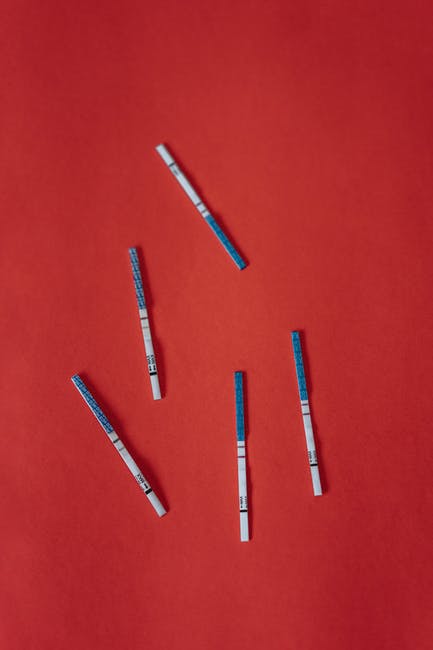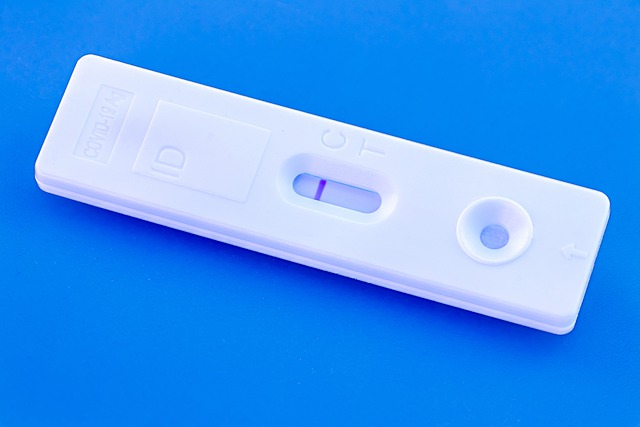.jpg)
Rapid Diagnostic Test Strips-how it has enhanced accurate diagnoses in sub-urban and local Labs.
I really love and cherish all the experiences I've gathered since I joined @Hive.Blog, the communities, personalities, models and friends I see here, really you guys are making my day, real seriously.
Today I come to share my thoughts on the the topic above, I have really meditated on it for a long time now, so I wish to add my own take especially how it has affected our local Laboratories positively.
In recent years, the production and the use of Rapid Diagnostic strips have increased so much that many medical diagnostic laboratories especially our local Laboratories and the ones in the the suburban areas depends on them for their diagnostic services.
Furthermore, the wide range of tests that can be done with the use of this rapid diagnostic test strips (RDTS), keep increasing everyday. The clinical diagnoses which can be done with this RDTS include; detection of SARS-CoV-2 (Covid 19 antigen test), HIV, hepatitis viruses ( hepatitis A, B, and C.), Syphilis (VDRL), Streptococci, gonorrhea, glucose and most other clinically important body chemicals (bilirubin, ketones, blood... )Rapid antibody tests,
Rapid plasma reagin, Rapid influenza diagnostic test, Malaria antigen detection tests (mostly for plasmodium falciparum), Rapid urease test etc
Researchers continue exploring more technology on the use of this RDTS, to produce test devices with increased specificity, accuracy, fast and reliable.
Rapid diagnostic test strips are invitro medical devices used singly or in series for diagnoses, it is designed to give a fast results, it doesn't require any automation.
The procedure involved makes it require less samples during use.
Rapid diagnostic test strips (RDTS), are mostly qualitative or semi-quantitative
(By qualitative: they only show the presence or absence of the analyte being tested. {Denoted as positive or negative and reactive or non reactive}

Semi-quantitative: they show the presence of the analyte being tested representing it in the degree (intensity) of their availability- it usually denoted by pluses {+, ++, +++ etc. eg; as seen in combi 9}).
They generally give out result within 5minutes to 30minutes after introducing the sample to the test strip.
RDTS can be classified as Lateral flow eg: pregnancy test strip, Dipstick eg: Combi 9, and vertical flow etc.
They normally work better when the storage is kept moderately within room temperature (23°c to 27°c).
The use of these test strips has been very popular among the individuals, eg: pregnancy test strips among ladies especially newly married ones and students in higher institutions.
This bring me to one of the major disadvantage of this rapid diagnostic test strips, which is "quackery", it encourages quackery, anybody can likely use it with any little knowledge of how it works, sometimes I might give wrong results which can not detected by non professionals using it.
Other disadvantages may include, inaccuracies in results etc, but when this device is misbehaving (producing error) while using by professional, the likeliness of detecting the error is very high.
In addition to the main context of the article, the use of this rapid diagnostic test strips has helped our local Laboratories, and the ones in suburban areas.
Take for instance, during my industrial training I was opportuned to be posted in one of the local/side laboratory in my area, there, we rarely have light and usually the cost of running power commercially throughout the working periods is very high, it only depends on the nature and the output of the business for people that use it. We mostly make use of this RDTS, you will notice that after collection of samples, we tell the patient to come back later, after sometime for the result. Why, because we would just allow the sample if blood to separate by standing under gravitational force, instead of centrifuge for the separation, notwithstanding this factors, the supposed result are produced maintaining same supposed accuracy.
The commonly used samples in the RDTS include, blood, it's components ( serum or plasma), urine, saliver and sometimes swabs (eg: Chlamydia, specific test for Chlamydia makes use of the urethra or vaginal swab)
Antigen-antibody and chemical reaction, most of the common procedures demonstrated in the laboratories employs this principles.
For antigen-antibody, the test strips is either coated with the antigen or antibodies that are specific to any infection (eg: HIV) they test.
(Note that antigens are substances that when introduced into the body will trigger some antigenic reactions, thereby producing antibodies that are specific to that particular antigen,
So also antibodies, this are substances that are produced in the presence of an antigenic stimulation, that bind only with the specific antigen to bring about antigen-antibody complexes.)
So the invitro reaction takes place in the test strips where artificially prepared antigen or antibodies are used together with the patient's samples, results are denoted by some chromatographic methods employed during the production of this test device thus giving the output in form of a color reaction or development.
(This color development are used to determine the positivity and negativity of the test
Where double color development (at the control band and test band) shows a positive test result.
Also, single color development (at the control band/line) shows a negative test result.
Single color development at the test band/line without any color development in the control band shows an invalid results, and must be discarded and repeated).

So also the chemical reactions, the chemical molecules that are sensitive to the analyte being tested are employed during the production, results are denoted by color development or change.
Above are the principles employed by the use of this test devices, the use in the local Laboratories has reduced the need for big machines for processing of samples, they are cost effective enough, fast and reliant.
When handled according to the manufacturer's instructions and by a professional, has the tendency of producing 95% to 100% accuracy in the test result.
Some of the major ways to increase the accuracy in the results and to get to reliability on this test strips from any manufacturer any time a new product is purchased before use is by running a quality assurance test on the newly purchased test strips, this is usually done by the use of a known positive and a known negative samples, then test these samples with the newly purchased strips, compare the results and make sure they pass the quality assurance.
Maintenance of the moderate temperature, especially as stated by the manufacturer is another great factor that would increase the durability of the RDTS while maintaining accuracy.
The appropriate use of samples and processing method effects the quality of the results produced.
The time of analysis is also another factor, the manufacturer instructions should be strictly followed, make sure the results are read within the specified time.(eg pregnancy test strips tends to give false positive results after 10minutes of testing).
In conclusion, by adherence to the guiding procedures and standards, professionals working at some of this laboratories in suburban areas tends to produce accurate results with the the limited resources available in the laboratory, by the appropriate application and use of this rapid diagnostic test strips.
References :
rapid-diagnostic-tests-infectious-diseases
Thanks for your contribution to the STEMsocial community. Feel free to join us on discord to get to know the rest of us!
Please consider delegating to the @stemsocial account (85% of the curation rewards are returned).
You may also include @stemsocial as a beneficiary of the rewards of this post to get a stronger support.